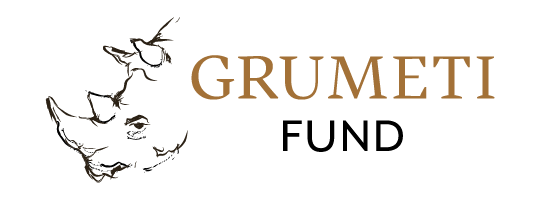A Year of Rhino
Two years ago, the Grumeti Fund made a commitment to bring black rhino back to the Serengeti ecosystem with the goal of bolstering the Tanzanian rhino population and stimulating the local gene pool. Shortly after the project began, we received a call from San Diego Zoo Safari Park offering to donate a black rhino bull named Eric. This kicked off the multi-phase Ikorongo Black Rhino Re-establishment Project: a partnership between the Grumeti Fund and the Tanzanian Ministry of Natural Resources and Tourism. Eric arrived on the 11th of September 2018, joining one female (known as Laikipia) already residing on the concession. His epic journey involved multiple trucks and cargo planes, stopping in five countries, during his mammoth 68-hour travel ordeal to Singita Grumeti. Eric’s complex journey – one of the longest translocations undertaken in recent history (watch the video) – was a logistical and veterinary feat of note. Since his arrival, Eric has undergone a process of naturalization and re-wilding, learning how to eat local browse instead of pellets and carrots, becoming used to tsetse flies and local diseases, and meeting Laikipia with whom we hope he will mate. Eric and Laikipia have been seen together, roaming happily throughout the 276-hectare Black Rhino Intensive Protection Zone, so we are hopeful that there will be a little rhino arriving in 15 months time.

Photo: George Tolchard
Phase two of the project was planned to be the translocation of another rhino bull from a captive population. His name was Zambezi and he was donated by the Aspinall Foundation in the U.K. Zambezi, a magnificent bull who had sired several calves at Port Lympne Reserve, was a proven breeding bull and his genetics would have added further diversity to the greater Serengeti rhino population for years to come. Sadly, his journey to Tanzania ended in tragedy when he passed away due to a drug-related complication while flying over the Mediterranean on his way to the western Serengeti (you can read the full report here). This loss devastated everyone involved, but all agreed that the best way we could pay tribute to him was to continue our mission to establish a strong breeding nucleus of black rhino in Ikorongo and to not give up on the commitment we had made to rhino conservation in East Africa.
Now, precisely one year after the arrival of Eric, we are in phase three of the project and have just completed the largest ever translocation of rhino into Tanzania. Ultimately, nine rhino (very sadly a bull also passed away from a heart attack before traveling to Tanzania) landed in Tanzania from South Africa on September 10th. This breeding cohort came from Thaba Tholo Game Farm in South Africa. They are descendants of eastern black rhino that were removed from East Africa by conservationists in the 1970’s to safeguard the subspecies during the first rhino poaching crisis.

Photo: Sacha Specker
With less than 1,000 eastern black rhino remaining today, the contribution that these rhino will make to the current Serengeti population is significant. The nine rhino, comprising five cows and four bulls (two of which are calves), represent an automatic 10% increase to the current Tanzanian black rhino population.
The process of moving rhino internationally is complicated and challenging. There are few organizations in the world with the necessary skills, expertise and partnerships to be able to translocate large numbers of this critically endangered species. Strong collaborations and genuine government support are key. Far-sighted rhino conservation initiatives, such as the Ikorongo Black Rhino Reestablishment Project, would not be possible without the commitment and support of the Tanzanian government, the experience and expertise of wildlife capture and translocation specialists like Conservation Solutions, the care of experienced rhino vets, and the generous financial contributions of conservation-minded philanthropists from around the world.
The specific animals to be translocated were chosen based on age, genetics, gender and fertility criteria. They were captured and put in enclosures several weeks ahead of their move in order to acclimate to smaller surroundings, as their journey from South Africa to Tanzania had to be undertaken in a crate. They were monitored carefully by veterinarians and behavior specialists before, during and after their long journey. On the political side, endless meetings, documents and paperwork had to be processed in order to legally move the animals from South Africa to Tanzania. Large cargo planes were contracted to fly the animals between countries, and translocation experts and crane trucks were hired in order to have the necessary equipment and expertise on the ground for the rhino’s arrival. Specialized crates were designed – each to the exact measurements of the rhino that would be traveling in them. Enclosures were constructed, roads were repaired, fences were built, new monitoring teams were created and sent to other rhino projects in East Africa to learn about rhino tracking. Detailed protocols and strategies were developed between multiple partner organizations to ensure that the security of the animals would be of the highest standard… and this all needed to be put in place before the animals arrived in the Serengeti.

Photo: Sacha Specker
Having been on the ground for ten days now, we are happy to report that the rhino are settling in nicely. Three of the nine have been released, as it was quickly identified by the boma management team that the animals would be much healthier and happier out of the enclosures. The monitoring teams are now on the move and tracking the rhino on a daily basis with the aid of telemetry and horn transmitters. Every sighting of the rhino is fed into EarthRanger (the real time visualization tool developed by Vulcan Inc.) so that we have a constant understanding of where the rhino are at all times.

 Photo: Sacha Specker
Photo: Sacha Specker
The six animals that remain in the temporary enclosures, including the mothers with calves, will receive transmitter implants and be released when we receive government permission and veterinary sign off. Since the new rhino arrived, we have already seen more movement of other rhino in the ecosystem, including an unknown female that showed up unannounced a few days ago. These rhino movements and interactions bode well for future genetic mixing and black rhino breeding opportunities in the Serengeti ecosystem.

Photo: Sacha Specker
For now, we will focus on the safety and security of the rhino at Singita Grumeti, as well as the release of the remaining six Thaba Tholo animals, along with Eric and Laikipia, later this year. Phase four of the Ikorongo Black Rhino Re-establishment Project is scheduled for mid-2020, but work to secure this translocation of five more eastern black rhino – one bull and four cows – is already underway.
You can donate to the Grumeti Fund’s Black Rhino Re-establishment Project here




